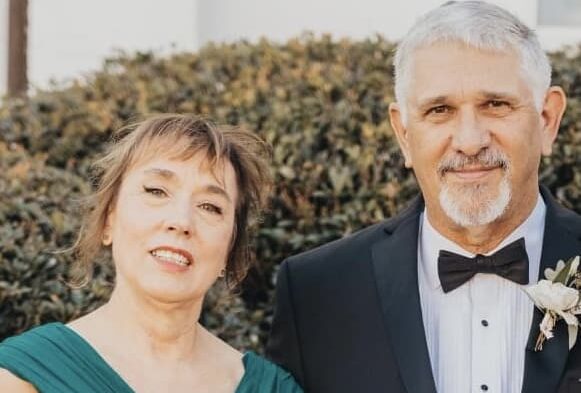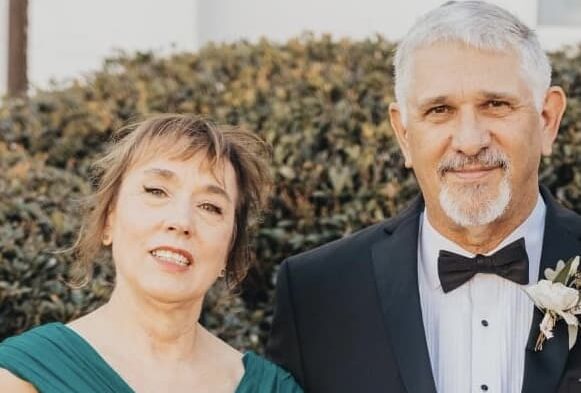Interview with Sporting Group Breeders Walter & Carol Sommerfelt.
Where do we live? How many years in dogs? How many years as a breeder?
We live in Lenoir City, Tennessee, just west of Knoxville. Walter has been in dogs 49 years and Carol, 46 years. We’ve been breeders for 46 years.
What is our kennel name? How many dogs do we currently keep?
Our kennel name is “Lorac” and we currently have eight Vizslas.
Which show dogs from the past have been our noteworthy winners?
Because we are both judges, campaigning dogs has never been a top priority for us. However, we have had several nationally-ranked dogs, not only in Vizslas but also in a few other breeds. In the Vizsla breed, we bred and co-owned Dual Champion, Amateur Field Champion Mudsville Lorac Makk. We also owned and bred the No. 3 ranked breed and all-breed Vizsla in 2013 and 2014, BISS GCHG Lorac’s Cap’N Jack Sparrow (Jack). We also owned and exhibited American Foxhound BIS, BISS GCH Kiarry’s Walk This Way (Steven), a top-ranked breed and all-breed, multiple Best in Show winner and the No. 2 Hound Sire all-breeds in 2010 as well as the sire of Westminster Hound Group Winner and No. 1 Hound, GCH Kiarry’s Pandora Box (Jewel). We have also owned, exhibited, and bred Pointers, Old English Sheepdogs, and Bearded Collies in the past.
Which have been our most influential sires and dams?
Our Vizsla Club of America Register of Merit Sires are CH Lorac-Caldwell Ole Miss Rebel ROM and BISS GCHG Lorac’s Cap’N Jack Sparrow ROM. Our register of merit Dams include CH Lorac’s Steel Magnolia ROM, Lorac’s Zippin Pippin ROM, GCH Lorac’s Smoky Mountain Reign CGC ROM, and GCH Lorac’s Devilish Diva ROM. Another sire very close to his ROM is BISS GCH Lorac’s Bend It Like Beckett JH.
Can we talk about our facilities? Where are our puppies whelped? How are they raised?
We live on three acres with two acres fenced. We have a wonderful, large 15-foot-deep pond that we dug so that our dogs could swim and retrieve daily. Currently, our dogs all live in the house, although we also have a number of kennel runs available if needed. All of our litters are whelped in our kitchen and raised using the Jane Killion Puppy Culture Methods where they are exposed to noise, stimulation, and daily handling. Around the age of 5-6 weeks, the puppies are moved into both indoor and outdoor large pens with plenty of toys and obstacles to stimulate their development. Puppies are also allowed to run and play in the fenced acreage with adult supervision. At about 6-7 weeks they are exposed to quail, to evaluate each one’s individual aptitude for birdiness.
What is our “process” for selecting show puppies? At what age do we make our decision?
Primarily, we breed for ourselves but also realize that over 75% of our puppies are placed in good forever family homes only. We temperament test our puppies at 7 weeks of age using Wendy Vollhard’s Puppy Aptitude Test (PAT). Using this test, we are better able to place the right puppy in the correct new home. We evaluate conformation puppies starting at 5 weeks of age and continuing to 8 weeks of age. We observe the puppies’ movement running free in the yard as well as in the house to see which puppies exhibit the correct single tracking movement with balanced reach and drive. We also evaluate the puppies’ conformation by stacking on the grooming table and/or stacking blocks at 5 and 8 weeks of age, with the final decision being made at 8 weeks of age. We look for a puppy with balanced angulation along with a solid topline, good depth of chest and the correct square “appearing” proportions, and with a pleasing head and expression. Also, in combination with the PAT, we look for a strong, independent temperament to excel in the show ring.
How do we prepare our pups for the show ring?
All the puppies we keep in our breeding program attend puppy kindergarten classes at 3-4 months of age, after completing their initial and booster vaccinations. At about 4 months of age, the puppies also start attending group conformation classes weekly with Carol. We also train puppies at home by stacking on the ground and on stacking blocks. We practice moving at a trot in the yard and on pavement. When the puppies are 18-24 months old, we practice trotting beside our golf cart for one mile at least every other day. This also helps with keeping our dogs in well-muscled condition.
Are Performance and Companion titles important to us as breeders?
Performance and Companion Events are important to us as breeders. We have always tried to maintain the versatility of the Vizsla breed in our breeding program by using sires or dams with both Conformation and Performance titles. In the past, both of us have competed in Performance Events. Now we are thrilled to watch our new puppy owners have success in the many different Performance Events that are available as well as in Conformation. Along with many Conformation champions, numerous Lorac-bred or sired puppies have obtained Hunt Test Titles, Obedience and Rally Titles, Agility Titles, CGC Titles, Therapy Dog Titles, Trick Dog Titles, Dock Diving Titles, Barn Hunt Titles, and Fast CAT Titles.
In our opinion, is our breed in good condition overall? Any trends that warrant concern?
The breed is in good condition with regard to health-testing and general well-being. That being said, we have numerous issues that need to be addressed. The standard calls for a slight rounding of the croup with the tail being carried horizontally; if you were looking at a clock that would translate into a 3:00 tail set and carriage. We have very few dogs today that have the proper croup and tail. Though most would agree that a 2:00 tail is acceptable, we are seeing way too many with a high carriage at 1:00 or even straight up and carried like a white-tailed deer. This is a significant issue that does need to be worked on by breeders. The standard also reads: “…slightly longer than tall” with the appearance of being square. It would make more sense to say square from point of shoulder to croup. Also in the standard is the oxymoron: “Robust but rather lightly built.” This seems to confuse too many Vizsla Judges. We would suggest that it be revised to read: “Substance without coarseness.” A dog lacking in good bone, proper width and depth of chest, and good muscling would have great difficulty surviving in the field while doing a full day’s work. Better clarification on white markings is another area that leaves a lot open to interpretation. As with many breeds, toplines and shoulder layback are problem areas and the Vizsla is no exception.
Do we feel that our breed has a promising future as a family companion?
The breed has always excelled as a family companion, and the “Velcro” dogs should continue to thrive if breeders put temperament at the top of their list when considering specimens to be used in their respective breeding programs.
Do we have any thoughts we’d like to share about the sport of dogs in general?
Currently, the Conformation area of the sport has multiple issues to address to remain viable for the future, whereas the Performance areas seem to be picking up momentum in a variety of areas for the average owners in the sport.
For a bit of fun, what’s the most amusing experience we’ve ever experienced with a Sporting Dog?
Going on 50 years in the sport, there have been many fun and amusing moments. Choosing just one or two would be impossible. Let’s just say that when you own a Vizsla you will always be amused, entertained, and loved by your four-legged friends.









